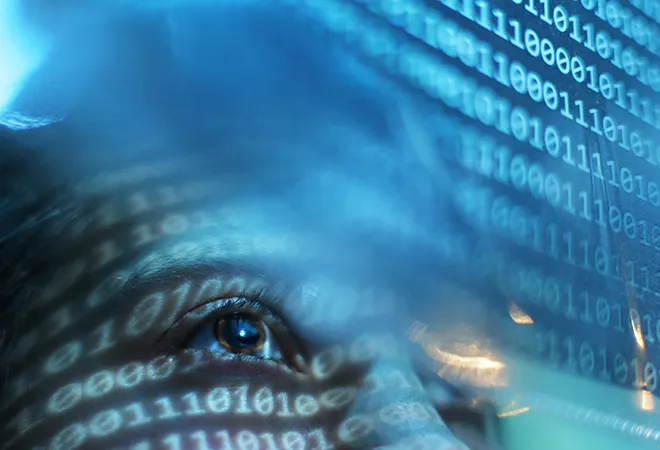
The unexpected shift from analog to virtual during the lockdown, forced society to embrace tech and digital resources for every daily activity. However, meaningful experiences online are not for all: the lack of access to ICT deny the most vulnerable parts of the community wider benefits. Gender based digital divide proves women — despite being frequent digital users, are at a disadvantage towards regular tasks and virtual ways of tackling this context. From attaining e-commerce aptitudes and opening to innovative assets such as virtual currency to acknowledging cybercrime situations, every field of our self-development online, shows the need of specific digital literacy policies to balance inequalities.
A frequent mistake is to measure women participation in ICT just by counting female presence in different techno - digital fields, mainly in the typical profile of users and consumers. However, a true gender sensitive approach looks for significant or relevant ICT activity. It can be proved - for example, that women are the major consumers of e-commerce. In the same line, women are more engaged on social media than men. These activities, despite giving the perception that we are deeply leveraging digital resources, might be taken as hints for in-depth discussion: what are women’s interests, limits and real engagement with the Digital Revolution and its implications? Would it be enough to just
be there, to just
use the tools?
The mandatory virtualization of daily activities due to COVID 19-even those which formerly were in the physical-mode-, reshaped (once more)
contemporary culture. There is still something to highlight: the access and advantages of ICT have been unevenly distributed since the beginning of the Digital Age. For instance, Latin America’s infrastructure as well as public policies (including legislation), remains at a much worse level than other regions in the world. Within the framework of each country, in a local analysis, disadvantages within the population – in terms of wellbeing and opportunities – also exacerbate the effective reach of digital benefits (due to age, geographic location, education level, etc.)
What cannot be overlooked is that just for being born female, women will be subject to distortion in their links to ICT. This statement applies to any level: access to technologies/to connectivity; usage and appropriation of ICT; permanence in the digital space. The three stages before referred, constitute the gender-based digital divides we ought to acknowledge profoundly to weigh how women are going
digitally through 2020.
Digital divides have traditionally been associated with the “connected – unconnected” binary around the world, considering only one aspect of the whole techno-digital experience for people: the digital divide related to physical
access. Although it is relevant to study the impact of the lack of connectivity (which includes regular access, appropriate devices, enough data and fast connection; in other words, a “
meaningful connectivity”), the level of usage and benefits of ICT (the second digital divide), seems not to have that much attention. Maybe, it remains not explored enough on the understanding that if people are digital users, they should
know at least the basic aspects of ICT and its benefits. This general thought prevents the decision-makers from tackling a true limiting marker of the Digital Age: even when overcoming the first barrier (access to the Internet/to ICT infrastructure), digital users may not know how to take full advantage of the entire toolkit.
The major concern when addressing the second digital divide, whilst activating the gender sensitive approach, comes from monitoring the women’s usage of the Internet. This is the central point of this article: most of the female population around the globe (even if we had the latest smartphone or a social media capacity 24/7), are totally unaware of the real requirements to keep up. This means, in simple words, that being digital users with total benefits, should entail a full control of the available techno-digital resources. Which with a critical view, we could not see it happening.
Let us analyse for instance, e-commerce activity of women both as sellers/vendors and consumers. Lockdown measures increased the number of people selling and buying online, and for many women it became the only way to make a living, since other gender based factors hinder work opportunities (for example, being in charge of children or being unemployed/ informally working). The fact that women virtualized their trade activity at such a pace- in comparison with previous years-,
does not mean they implemented e-commerce with skills and know-how; it does not even mean that this year for shows an improvement for women. In this aspect, to reach conclusions of significant improvement in experiences online (the ones that could truly manifest a reduction of the gender based digital divide), elements such as a conscious usage or technical knowledge (including setting security measures, deploying a fair website for the purpose or running any fintech program or online payment platform, just to list a few) become decisive. And this is exactly why it cannot be said that more women using ICT are more women taking full benefits of them: most of the sector, doesn't even stop to think about this, and the other part, would not ever know why they should.
Digital literacy is the only answer for us, to shorten a cultural disadvantaged position towards the Digital Age. Disaggregated data is the crucial starting point. When analysing statistics with a gender-based lens, the normally overlooked elements show up. To illustrate, the announcement that the
number of women in digital currency usage has skyrocketed, may require reading the fine print. For example: did the usage involve assistance from male investors? Which countries do they belong to? Are they fully aware of the implications? Do they know anything about digital security? How do they end up involved with cryptocurrency? The very same article that announces the increase of female presence in the field, highlights its trial stage. We researchers need to be sharp at pursuing the gender sensitive perspective to get to the core of female processes around ICT. It is not that simple.
Finally, a relevant benchmark when delving into the second gender based digital divide, is the number of cases of female victims of cybercrime. Again, the lack of sufficient e-skills to prevent harm online yet their lack of information about security measures and their digital rights, make them especially vulnerable and a perfect prey for criminals. Especially with regards to scamming and phishing. As far as it goes, 2020 has seen a rise in cybercrime towards women like never before, regardless of the region or country we put an eye on (it is happening in
India,
Argentina,
Europe). Has the second digital divide anything to do with these alarming statistics? Women in digital spaces feel unsafe while men use technologies with
natural affinity. This gives a powerful impetus for male violence against women: the unfamiliarity and fear we women experience due to the cultural barriers previously mentioned.
In summary, 2020 has shown an urgent need for digital literacy for women. Taking into account that ICT are the main means of production, economy and opportunities during the Fourth Industrial Revolution, not having enough autonomy and skills turns into an inevitable perpetuation of historic inequalities between genders: the intensification of gender based digital gaps would only continue to prevent women from exercising human rights.
The views expressed above belong to the author(s). ORF research and analyses now available on Telegram! Click here to access our curated content — blogs, longforms and interviews.



 The unexpected shift from analog to virtual during the lockdown, forced society to embrace tech and digital resources for every daily activity. However, meaningful experiences online are not for all: the lack of access to ICT deny the most vulnerable parts of the community wider benefits. Gender based digital divide proves women — despite being frequent digital users, are at a disadvantage towards regular tasks and virtual ways of tackling this context. From attaining e-commerce aptitudes and opening to innovative assets such as virtual currency to acknowledging cybercrime situations, every field of our self-development online, shows the need of specific digital literacy policies to balance inequalities.
A frequent mistake is to measure women participation in ICT just by counting female presence in different techno - digital fields, mainly in the typical profile of users and consumers. However, a true gender sensitive approach looks for significant or relevant ICT activity. It can be proved - for example, that women are the major consumers of e-commerce. In the same line, women are more engaged on social media than men. These activities, despite giving the perception that we are deeply leveraging digital resources, might be taken as hints for in-depth discussion: what are women’s interests, limits and real engagement with the Digital Revolution and its implications? Would it be enough to just be there, to just use the tools?
The mandatory virtualization of daily activities due to COVID 19-even those which formerly were in the physical-mode-, reshaped (once more)
The unexpected shift from analog to virtual during the lockdown, forced society to embrace tech and digital resources for every daily activity. However, meaningful experiences online are not for all: the lack of access to ICT deny the most vulnerable parts of the community wider benefits. Gender based digital divide proves women — despite being frequent digital users, are at a disadvantage towards regular tasks and virtual ways of tackling this context. From attaining e-commerce aptitudes and opening to innovative assets such as virtual currency to acknowledging cybercrime situations, every field of our self-development online, shows the need of specific digital literacy policies to balance inequalities.
A frequent mistake is to measure women participation in ICT just by counting female presence in different techno - digital fields, mainly in the typical profile of users and consumers. However, a true gender sensitive approach looks for significant or relevant ICT activity. It can be proved - for example, that women are the major consumers of e-commerce. In the same line, women are more engaged on social media than men. These activities, despite giving the perception that we are deeply leveraging digital resources, might be taken as hints for in-depth discussion: what are women’s interests, limits and real engagement with the Digital Revolution and its implications? Would it be enough to just be there, to just use the tools?
The mandatory virtualization of daily activities due to COVID 19-even those which formerly were in the physical-mode-, reshaped (once more)  PREV
PREV


